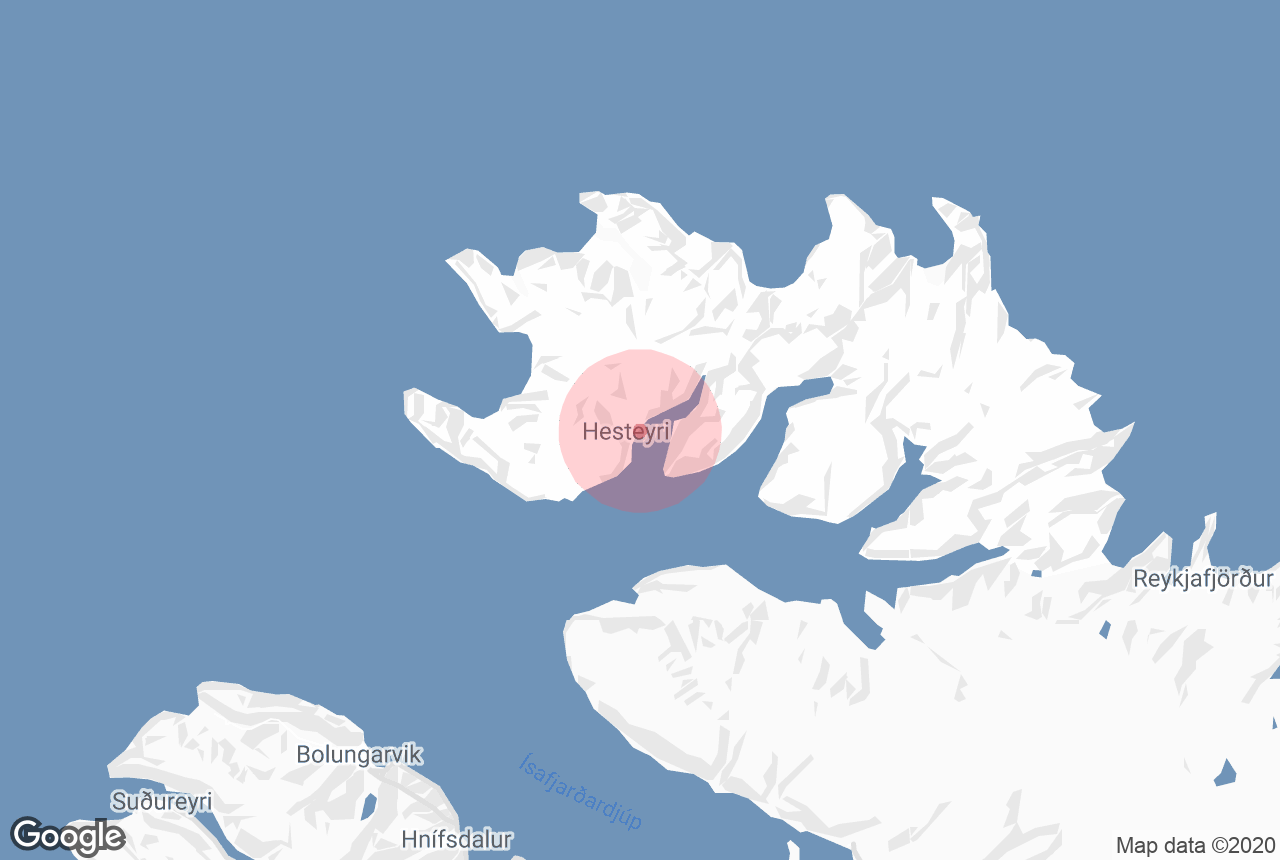Hornstrandir ist ein Naturschutzgebiet in den Westfjorden im Nordwesten Islands. Das gesamte Gebiet umfasst 580 Quadratkilometer Tundra, Klippen, blühende Wiesen und Eis.
Entdecke die Wunder dieser Region bei einer Tour durch die Westfjorde. Diese wunderschöne Gegend kannst du auch im Rahmen dieser 14-tägigen Mietwagenreise besuchen. Wer ein Auto mietet und in die Westfjorde reist, kann Hornstrandir auf dieser Tagestour erleben.
Warum du unseren Inhalten vertrauen kannst
Guide to Iceland ist die vertrauenswürdigste Reiseplattform Islands und hilft jedes Jahr Millionen von Besuchern. Alle Inhalte werden von lokalen Experten erstellt und geprüft, die Island in- und auswendig kennen. So kannst du dich auf zuverlässige, aktuelle und präzise Reisetipps verlassen.
Der Gletscher Drangajökull liegt im südlichen Teil der Region.
Das Naturschutzgebiet wurde 1975 gegründet. Es umfasst die malerischen Fjorde Hrafnfjördur und Furufjördur und reicht bis zum Skorarheidi-Moor.
Foto von Wikimedia, Creative Commons, von Mickaël Delcey. Keine Bearbeitungen vorgenommen.
Geschichte
Aufgrund der abgelegenen Lage des Naturschutzgebiets, selbst für die Westfjorde, ist es nicht verwunderlich, dass Hornstrandir eine ganz eigene, reiche Geschichte hat. Landwirtschaft war wegen des Geländes und der steilen Klippen schwierig, daher lebten die ersten Siedler hauptsächlich vom Fischfang und der Vogeljagd.
Die wenigen Bewohner lebten oft weit voneinander entfernt, was das Reisen zwischen den Höfen besonders im Winter erschwerte. Das Leben in Hornstrandir war daher einsam und schwer aufrechtzuerhalten.
Gesetzlose suchten Hornstrandir oft auf, in der Hoffnung, an Bord ausländischer Schiffe zu gelangen und im Ausland ein neues Leben zu beginnen. Neben der Angst vor dem Gesetz mussten sie auch auf Eisbären achten, die gelegentlich auf Eisschollen an Land trieben oder von Grönland herüberschwammen. Dies war besonders während der Kleinen Eiszeit zu Beginn des letzten Jahrtausends der Fall.
Flora und Fauna

In Hornstrandir wachsen etwa 260 verschiedene Arten von Blütenpflanzen und Farnen; viele davon sind in den gesamten Westfjorden heimisch, andere kommen nur in diesem Schutzgebiet vor.
Einer der Gründe für diese üppige Pflanzenvielfalt ist, dass es in Hornstrandir seit mehreren Jahrzehnten keine Weidetiere mehr gibt. Die kniehohe Vegetation erstreckt sich oft kilometerweit und macht Wanderungen durch die Wildnis zu einer echten Herausforderung.
Seit den 1950er Jahren gibt es in Hornstrandir keine ständigen menschlichen Bewohner mehr. Das Gebiet ist für motorisierte Fahrzeuge unzugänglich, und nur einige alte Gebäude und Bauernhöfe erinnern noch an die frühere Besiedlung. Hier lebt jedoch das einzige einheimische Säugetier Islands, der freche Polarfuchs, der die Vögel an den steilen Klippen von Hornstrandir jagt.
Im gesamten Gebiet gilt ein Jagdverbot, sodass die Fuchspopulationen ohne Angst vor Menschen leben können. Deshalb zeigen sie keine Scheu vor Reisenden und nähern sich oft den Camps auf der Suche nach etwas Fressbarem.
Das andere auffälligste Säugetier der Region ist die Feldmaus, die jedoch schwerer zu entdecken ist. Vogelliebhaber können viele brütende Arten beobachten, darunter Küstenseeschwalben, Papageitaucher und Gryllteisten. In der Region befinden sich zwei der größten Vogelfelsen Europas, die die Küstenlandschaft der Hornvík-Bucht überragen.
Der einzige größere Vogelfelsen befindet sich auf der anderen Seite der Westfjorde und heißt Latrabjarg.
Aktivitäten in Hornstrandir
Wer in Hornstrandir wandern, erkunden und übernachten möchte, muss ein Zelt und ausreichend Ausrüstung mitbringen, wenn er campen möchte. Wie bereits erwähnt, gibt es im Naturschutzgebiet keine Straßen, festen Unterkünfte oder Geschäfte – wer hier unterwegs ist, muss sich komplett selbst versorgen.
Eine Reise hierher erfordert sorgfältige Planung, und Besucher sollten ausreichend Proviant, Wasser, warme Kleidung und feste Wanderschuhe dabeihaben.
Eine Wanderung zum Hornbjarg ist ein absolutes Muss in Hornstrandir; dies ist das bekannteste Naturwahrzeichen der Region – eine imposante Klippe am nördlichen Ende des Schutzgebiets.
Die Region ist nur während der Sommermonate (Mai, Juni, Juli und manchmal August) im Rahmen organisierter Touren zugänglich. Im Winter sind nur speziell genehmigte Ausflüge erlaubt.










